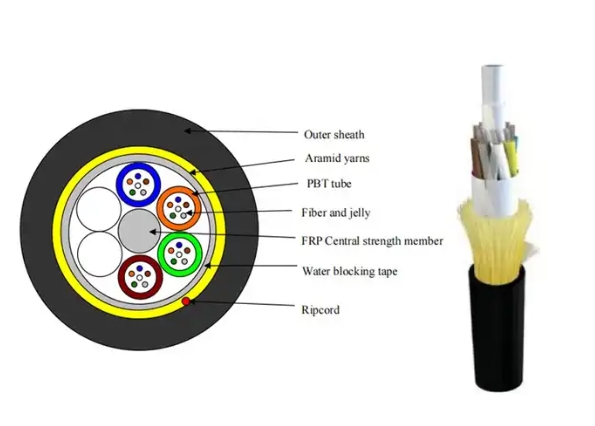
ADSS (All-Dielectric Self-Supporting) fiber optic cables are commonly used in telecommunication networks for long-distance communication. Here are some typical specifications for ADSS fiber optic cables:
Fiber Count: ADSS cables can have various fiber counts, ranging from as low as 12 fibers to over 288 fibers or even more, depending on the specific requirements of the network.
Fiber Type: The most common fiber type used in ADSS cables is single-mode fiber (SMF), optimized for long-distance transmission with minimal signal loss. However, multimode fibers can also be used for shorter-distance applications.
Outer Diameter: ADSS cables are designed to be lightweight and easy to install on existing poles or towers without the need for additional support structures. The outer diameter typically ranges from 8mm to 20mm, depending on the fiber count and design.
Tensile Strength: ADSS cables are self-supporting, meaning they don't require a metallic or steel support strand for structural integrity. They are designed to withstand the tension forces encountered during installation and operation. Tensile strength can vary but is often in the range of 1,000 to 5,000 pounds or more.
Jacket Material: The outer jacket of ADSS cables is made from a durable, weather-resistant material such as polyethylene (PE) or thermoplastic urethane (TPU). This jacket protects the fibers from environmental factors such as moisture, UV radiation, and temperature variations.
Operating Temperature: ADSS cables are designed to operate reliably over a wide temperature range, typically from -40°C to +70°C or even higher in some cases, depending on the specific materials used in construction.
Installation Span: ADSS cables can be installed over long spans between support structures, such as utility poles or transmission towers. The installation span can vary depending on factors such as cable diameter, fiber count, and environmental conditions but can range from a few hundred meters to several kilometers between support points.
Optical Performance: ADSS cables are engineered to provide low attenuation and high bandwidth for reliable data transmission. They typically meet or exceed industry standards for optical performance, including parameters such as insertion loss, return loss, and dispersion.
Compliance Standards: ADSS cables are often designed and manufactured according to international standards such as ITU-T G.652 (for single-mode fibers), ITU-T G.651 (for multimode fibers), and various ANSI/TIA and IEC standards for cable construction, optical performance, and environmental durability.

It's important to note that specific specifications may vary depending on the manufacturer and the intended application of the ADSS fiber optic cable. Users should consult with cable manufacturers or suppliers to ensure that they select the most suitable cable for their particular requirements.
03-21
202502-12
202509-12
202409-05
202408-16
202408-07
202408-06
202408-02
202407-30
202407-29
2024
